The Nature
Observer’s Journal
The Nature
Observer’s Journal

A Day as Colorful as Butterfly Wings
by Chuck Tague
September 1996 ended with a magnificent pageant of color. The soft warm afternoon sunlight angling through the deep blue sky and clear air intensified the colorful mosaic of the fields and forests.
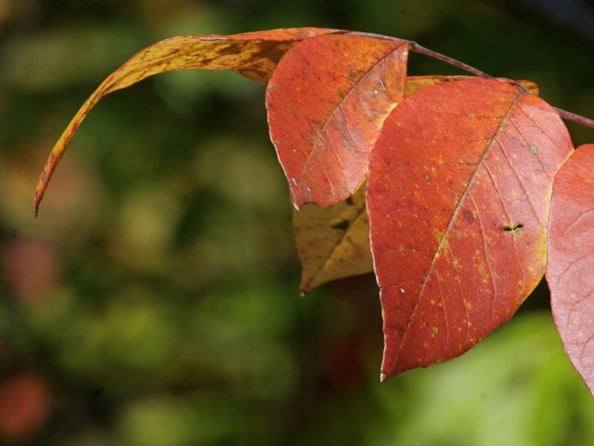
White Ash leaf
Bronzy ash trees, ranging from burnished gold to dusty rose, speckled wooded hills otherwise as green and lush as early June. Roving flocks of robins and starlings twisted through kaleidoscopic ribbons bordering the thickets and hedgerows, searching for fruit among the maroon brambles, yellow-orange sumacs, flaming poison ivy and crimson spirals of Virginia Creeper.
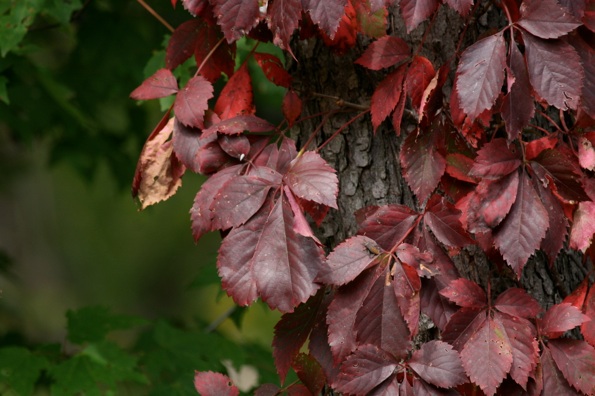
Insects flitted and buzzed through goldenrods in their final days, their waning glory evident in dull plants along the roads.
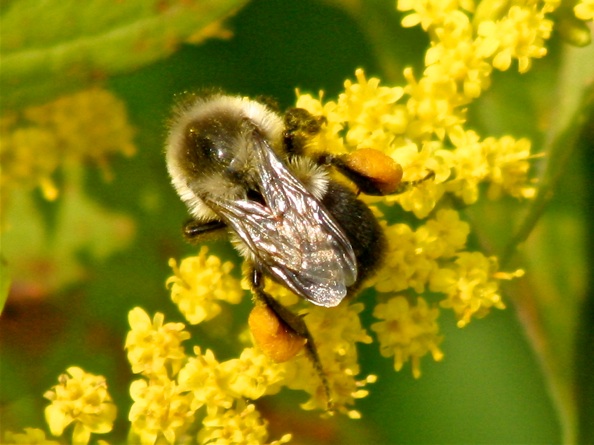
Autumn’s floral royalty, violet-purple New England Asters, wearing their golden disks like crowns, held court over the golden fields.
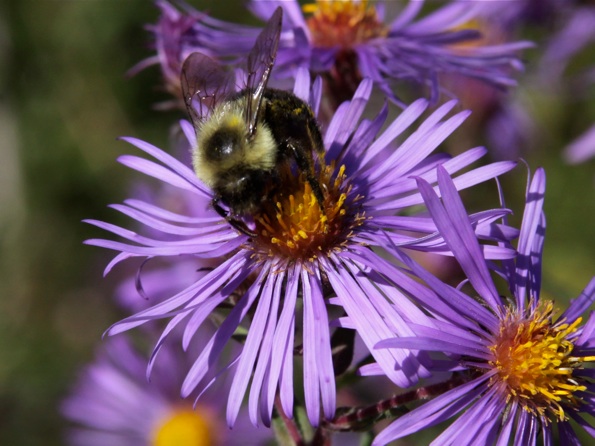
Constellations of other asters -- lilac, blue and white -- accent the edges and floor of the open woods. Chimney Swifts swarmed around the pond, darting, diving and dipping with loud clicking beaks into the mirror smooth surface of the water. Spectacular colors -- diverse, vibrant and intense -- splashed across the western Pennsylvania landscape unapologetically like the wings of a butterfly.
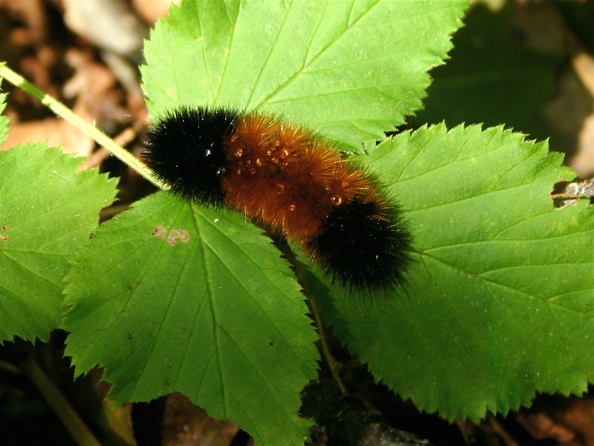
Woolly bears, the larval form of the Isabella Tiger Moth, nonchalantly wiggled across the roads and trails in front of me, a dozen every hour, sometimes more. In the grass a Hickory Tussock Moth caterpillar caught my eye. Monarch Butterflies floated deliberately southward. Orange anglewings, Commas and Question Marks drifted about in no particular direction at all.
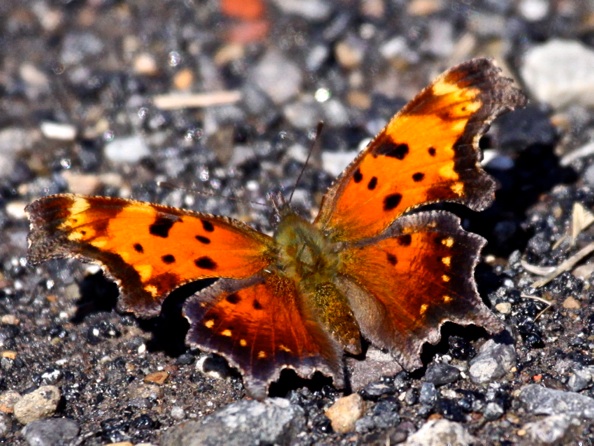
Gray Comma, Polygonia progne
I pulled into a parking lot in Hillman State Park in Washington County, PA and a small bright orange patch on the ground exploded in front of my car. Fluorescent fragments flew in all directions, drifted in lazy circles and finally reassembled in the original spot. Several yards away a second group of sulphur butterflies did the same. I examined the butterflies through my binoculars.
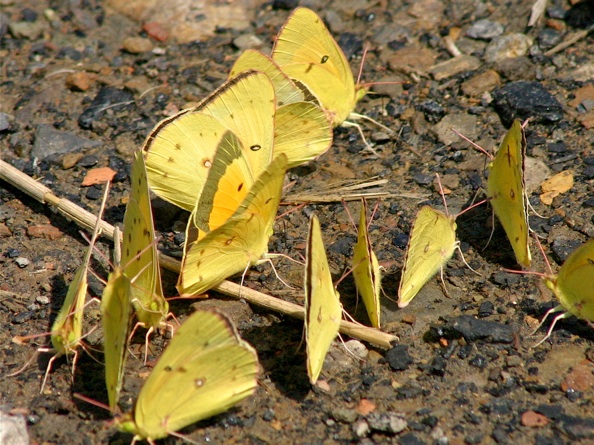
All held their wings straight up, folded and facing the sun. A thin lilac margin fringed the lemon yellow undersides as well as a large silver dot in the center of the hindwing. The line of dark dots just inside both front and back wings identified them as Orange Sulphurs, Colias philodice. I counted at least fifty.
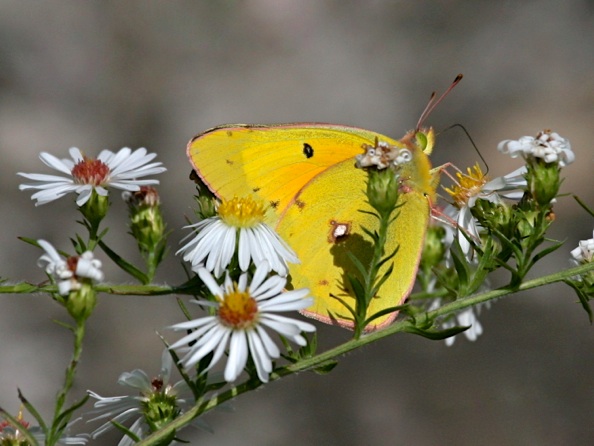
Orange Sulphur on Calico Asters
One opened its wings revealing a bright orange upper surface outlined with a thick dark margin. It folded up and sunlight shining through the translucent wings silhouetted the inner markings.
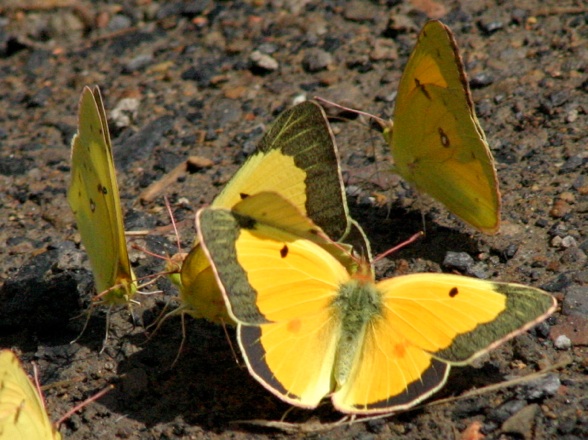
As I watched several more sulphurs flew in. They all landed on two or three spots, all in the sun and all on bare patches near the edge of the parking area. A few anglewings, some tiny Eastern Tailed Blue, some small dusky butterfly and a large Mourning Cloak joined the group.
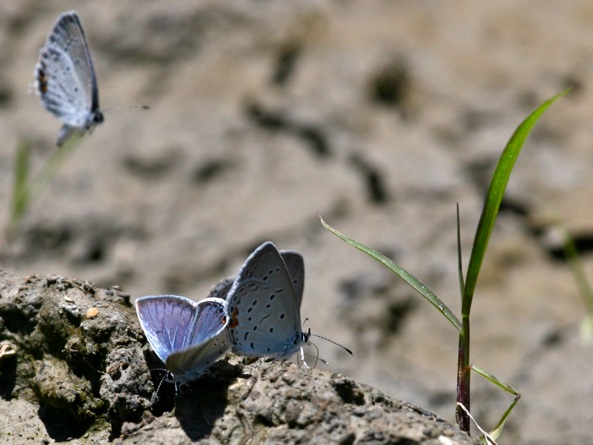
Why did they choose those particular spots? The behavior, called puddling, involves only male butterflies. They gather at concentrations of minerals such as dried puddles, old campfires, decaying carcasses or places where animals have dropped dung or urine. The groups formed on high spots and I could see no signs of garbage or animal waste. Dog trainers often use this lot as a staging area for trials, however, and I am sure many dogs have left their marks. Perhaps the several beer cans and bottles that littered the parking lot provided a clue.
I spotted several more sulphurs wandering across the field, probably females looking for suitable places to deposit their eggs. Sulphurs lay eggs singly on clovers, vetches and other legumes. They overwinter as a pupa and little time remains for the next generation to develop.
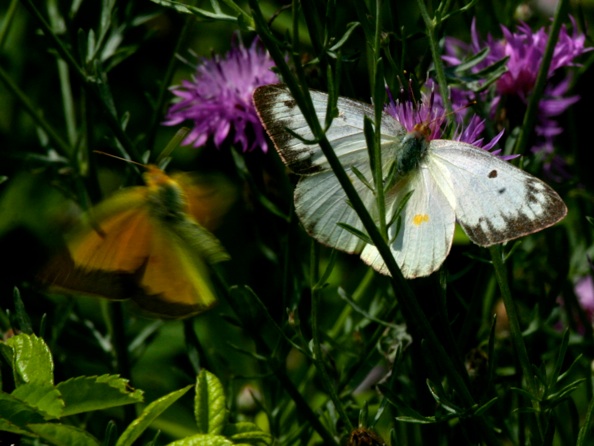
Orange Sulphurs, white autumn female & yellow male
I left the butterflies and headed off to enjoy the afternoon. Not far up the trail something on the ground caught my eye. I bent over and found a Chinese Mantis about five inches long. The huge insect’s long cylindrical body, long legs and tiny, rotating head filled with huge eyes blended perfectly with the dried stems and grasses around it. I would never have spotted it except for the pile of sulfur-yellow wings beneath its head.
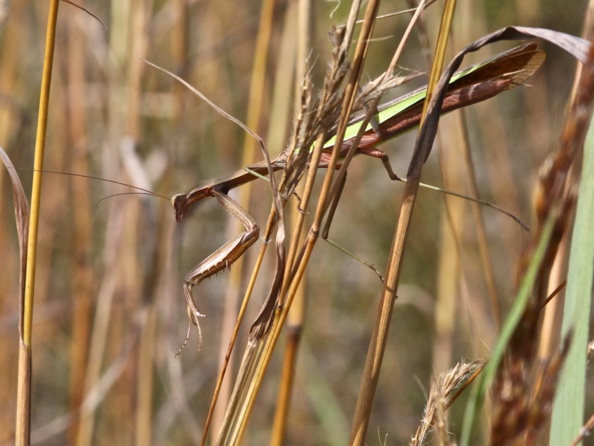
I gently touched the mantis’ flank, but it did not fly. Instead it turned towards me and gave me a menacing stare. I moved on.
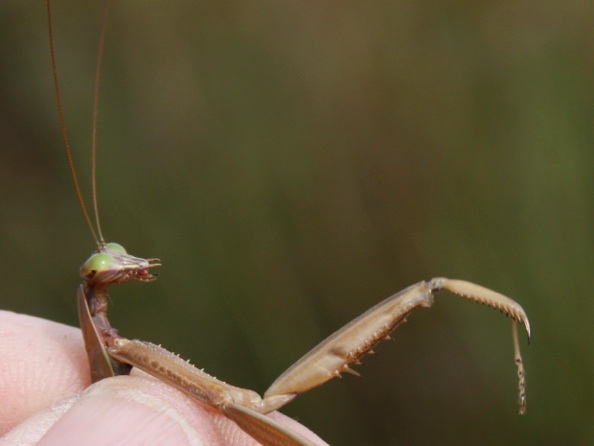
I can only speculate on what happened. A female sulphur, searching for a suitable plant to lay her eggs, investigated the waiting, well-camouflaged mantis which snatched her with its powerful forelimbs.
Autumn days like these are as fleeting and ephemeral as the butterflies themselves. A tall wooded slope blocked the sun and a cool moist breeze blew across the trail. I thought about the butterflies and the mantis. Soon the other sulphurs will perish as well. Some will also be food for predators, while the rest will succumb to the cold.
I hope the one eaten by the mantis deposited some of her eggs before she fell into its grasp.
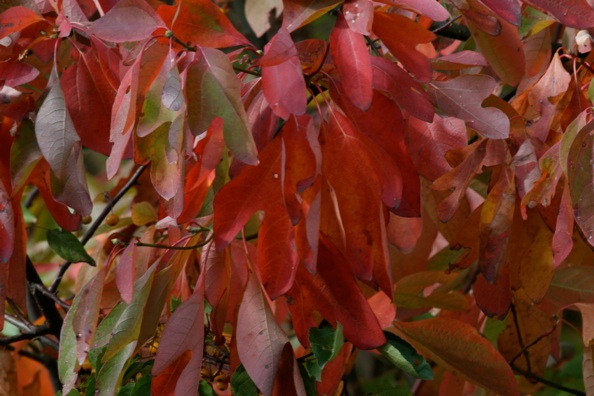
Sassafras
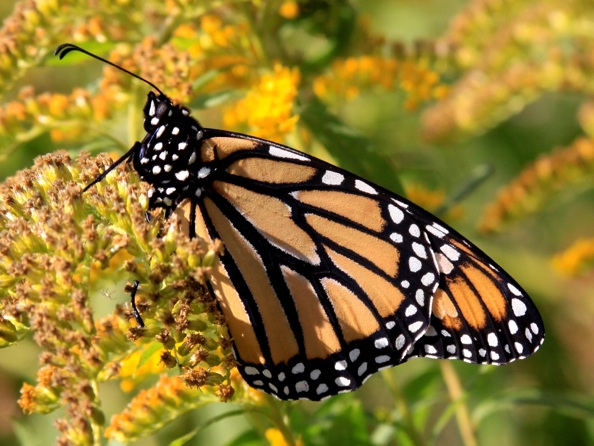
Monarch on goldenrod
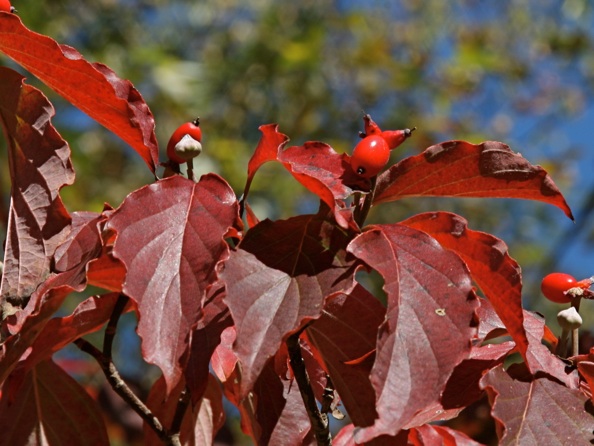
Flowering Dogwood fruit
Tuesday, September 25, 2012
